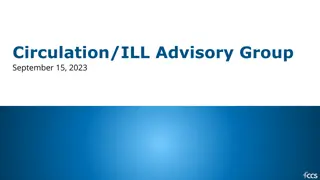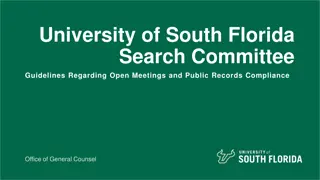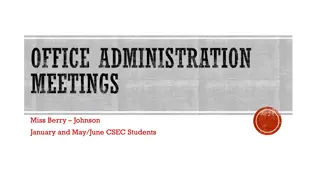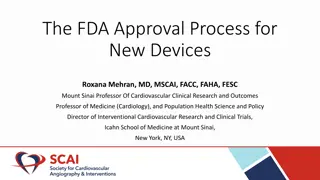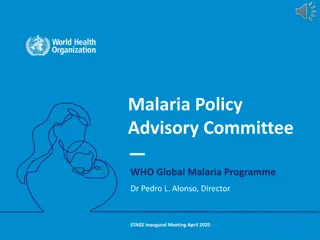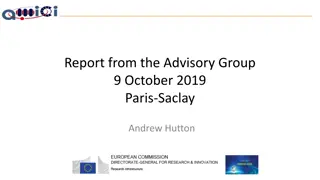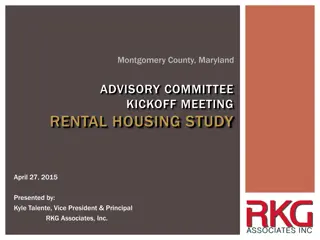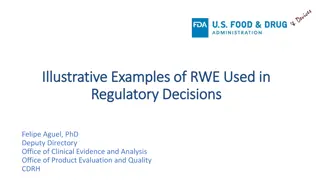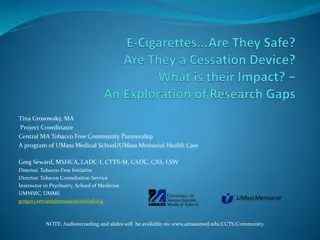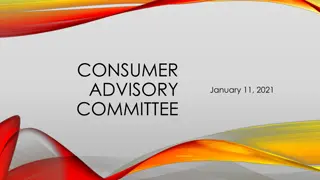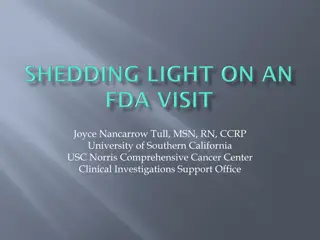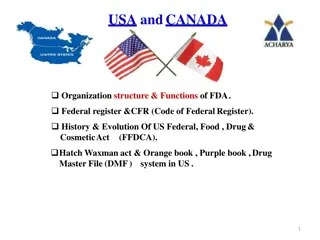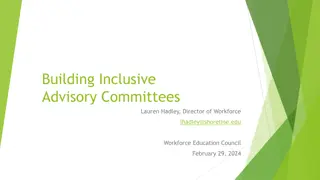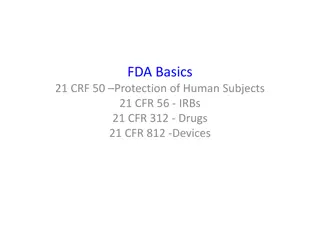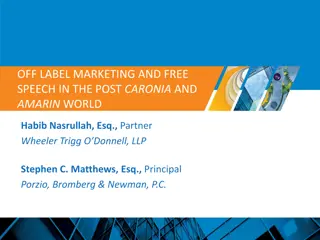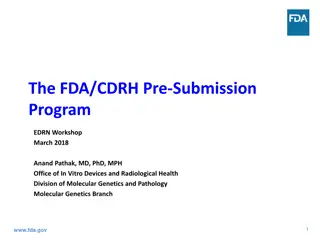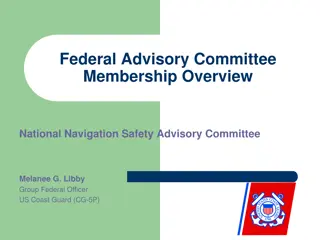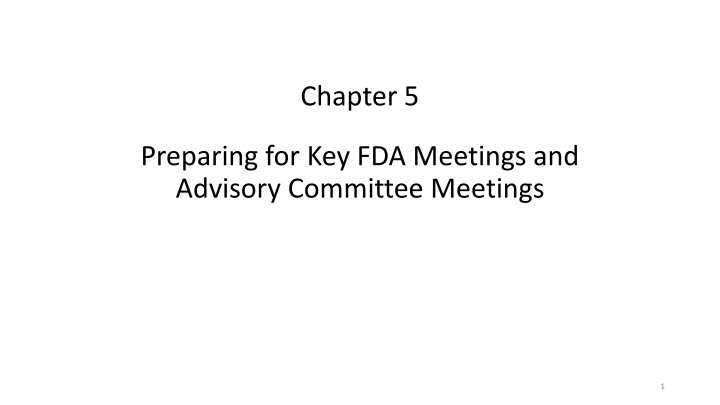
Preparation Tips for FDA and Advisory Committee Meetings
Discover essential steps for preparing to engage with the FDA, maximizing interaction opportunities, establishing credibility, and navigating Advisory Committee Meetings effectively. Learn about strategic planning, audience analysis, and content development to ensure successful interactions with key stakeholders.
Download Presentation

Please find below an Image/Link to download the presentation.
The content on the website is provided AS IS for your information and personal use only. It may not be sold, licensed, or shared on other websites without obtaining consent from the author. If you encounter any issues during the download, it is possible that the publisher has removed the file from their server.
You are allowed to download the files provided on this website for personal or commercial use, subject to the condition that they are used lawfully. All files are the property of their respective owners.
The content on the website is provided AS IS for your information and personal use only. It may not be sold, licensed, or shared on other websites without obtaining consent from the author.
E N D
Presentation Transcript
Chapter 5 Preparing for Key FDA Meetings and Advisory Committee Meetings 1
General General Preparation for FDA Meetings Preparation for FDA Meetings Goal: Maximize FDA interaction opportunities Establish open and upfront relationship Demonstrate credibility for product/issue Tell a clear story (set information in context) 2
General Preparation for FDA Meetings (continued) General Preparation for FDA Meetings (continued) Companies should take the following 10 steps for any meetings with the FDA: 1) Know your audience 2) Know the issues 3) Set a goal for each FDA conversation or meeting 4) Know your position 5) Provide pertinent materials for each meeting in a timely way to allow FDA to adequately analyze the information Preliminary proposed agenda 3
10 Steps (Continued) 10 Steps (Continued) 6) Anticipate concerns and interests, and be prepared to sufficiently answer likely FDA questions Proactively prepare acceptable contingency scenarios Be Organized Listen carefully to what FDA is actually saying Watch body language Record Feedback Including documenting when FDA mutes the phone 10) Foster a flexible, collaborative and non-adversarial relationship 7) 8) 9) 4
Advisory Committee Meeting Advisory Committee Meeting Strategic planning for a potential meeting must be a part of any product development process (PMA, NDA, or BLA) Voting members may not have an in-depth product-specific knowledge Preparing for an Advisory Committee Meeting Three (3) step approach: Analysis Content development Testing of strategy and materials 5
Understanding the Audience Understanding the Audience Knowing how people may vote is critical Study past votes Review previous meeting transcripts www.fda.gov Viewing meeting videos www.fdalive.com Analyze interests Identify relationships among committee members Possible field trip to see the committee in action 6
Evaluating the Evaluating the Data/Science Data/Science It is important to first develop a strategic message Conduct a brainstorming session Figure out the high level messages Discuss and prioritize the data Incorporate the data into a message matrix to serve as a guide to outline and develop the presentations Assign individual owners 7
Analyzing the external environment Analyzing the external environment It is important to pay attention to the public and political environment Identify the most influential patient and consumer groups and healthcare associations Assess opinions of medical experts and societies Listen to what the financial analysts are saying about the product and its impact Third party advocates (key opinion leaders and medical experts) can help support a sponsor s goal. It is critical that all financial relationships be appropriately disclosed; transparency is extremely important 8
Selecting the team Selecting the team Start with a senior R&D or regulatory person Ideal team: regulatory, medical, clinical, toxicology, statistics, pharmacovigilance, and marketing Key team areas to cover: Presentation Briefing book Scientific advisors Regulatory Communications Slide development Logistics 9
Writing Writing Your Material Your Material Briefing Book Short & concise 100-150 pages Never include new data Core Presentation Script 45-90 minutes Control the story around the data Context and clear explanation are essential Script every word of the presentation Q&A Book Map for the day of the hearing Slides Less is more Having a data triage team for Q&A slides 10
Final Considerations Final Considerations Practice makes perfect Conduct mock Advisory Committee hearings Internal team rehearsals Consult with External experts 48 hours before the meeting, FDA will release final names of the Advisory Committee members and the specific questions they will pose This is a great time to refine your strategy Also remember the meeting organization or security to ensure the meeting runs smoothly 11

